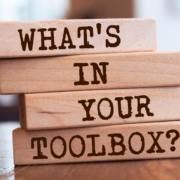Calming the Storm and Healing the Roots: Mindful Communication, Emotional Safety, and Healing Through DBT and EMDR
There are moments when emotions take over — when you want to communicate calmly, but everything inside feels too charged. Perhaps your voice becomes louder, or you shut down to maintain the peace. Later, you replay what happened and wonder, Why does this keep happening when I care so much?
It’s that your nervous system takes over before words can catch up. It’s not that you don’t know what to say. The body remembers what it’s learned about connection and safety, and sometimes that learning comes from pain.
Healing begins when you start understanding what’s happening in those moments — both on the surface and beneath it. Two evidence-based therapies—Dialectical Behavior Therapy (DBT) and Eye Movement Desensitization and Reprocessing (EMDR)—work beautifully together to support that process. When combined, DBT and EMDR therapy help you calm emotional storms and heal their roots.
Why Communication Feels So Hard
When emotions rise, it’s easy to lose touch with what matters most. You might find yourself trying to explain, defend, fix, or withdraw — all attempts to stay safe when things feel too intense.
DBT helps you slow down and see the pattern instead of getting swept away by it.
 You begin to understand how emotions build, what triggers them, and how your thoughts, body sensations, and actions are connected. This awareness helps you make sense of why you react the way you do — it’s a learned response that once made sense. It’s not a weakness or overreaction.
You begin to understand how emotions build, what triggers them, and how your thoughts, body sensations, and actions are connected. This awareness helps you make sense of why you react the way you do — it’s a learned response that once made sense. It’s not a weakness or overreaction.
In DBT, mindfulness plays a key role. It’s not about clearing your mind or staying perfectly calm; it’s about noticing what’s happening in real time — your thoughts, body cues, and emotions — without judgment. The more aware you are, the more choices you have in how you respond.
DBT also teaches validation, which is one of the most effective ways to de-escalate conflict and restore safety in connection. Validation means communicating, “What you feel makes sense,” it doesn’t mean agreement. It’s how we calm emotions, rebuild trust, and open space for real understanding — both with others and ourselves.
When mindfulness and validation work together, conversations start to change.
You can stay grounded while listening, express your needs clearly, and find balance between honoring your emotions and respecting someone else’s.
How EMDR Heals the Roots of Emotional Reactivity
Even with greater awareness, certain emotions can still feel automatic — like the volume turns up on its own. That’s because your body and brain store information from the past, especially moments of disconnection, criticism, or fear.
Our earliest relationships teach us what to expect from others.
If love were unpredictable, affection came with strings, or emotional needs went unseen, those experiences would shape attachment patterns that carry into adulthood. You may find yourself fearing rejection, feeling responsible for others’ emotions, or pulling away when things get too close — not because you want to, but because your nervous system remembers what it needed to do to stay safe.
EMDR helps the brain reprocess these experiences so they no longer dictate the present.
Through bilateral stimulation — gentle eye movements, taps, or tones — your brain revisits these old memory networks while connecting them to new information: That was then. This is now. I’m safe to connect.
As these memories integrate, the body’s responses begin to shift. The same conversations that once felt threatening become manageable. You can express yourself, handle conflict, and allow closeness without fear of losing control or being hurt.
(For a visual representation of this process, EMDR consultant Susie Morgan’s “Trees and the Forest” video from Precision EMDR illustrates how reprocessing untangles the past, allowing healing to take root.)
Where DBT and EMDR Therapy Meet: Awareness and Healing
DBT and EMDR share a common goal: helping you respond to life from the present rather than being driven by past pain. They naturally complement each other.
 DBT builds the stability and self-awareness that make healing possible.
DBT builds the stability and self-awareness that make healing possible.- EMDR helps release what has been stored in the nervous system, allowing new skills to take hold more deeply.
DBT helps you stay present, notice emotions before they overwhelm you, and choose how to respond. It teaches mindfulness, emotional regulation, and effective communication.
EMDR helps your brain and body resolve the old experiences that still trigger those intense emotional states — the attachment wounds, early invalidation, or memories that shaped how you relate to others.
Together, DBT and EMDR therapy help you live in the present instead of reliving the past. You can experience connection without fear and conflict without collapse.
(For a brief animated overview of DBT, you can watch this short video on YouTube.)
What Healing Starts to Feel Like
As you begin to calm the storm and heal the roots, subtle shifts start to appear:
- You notice emotions earlier and can respond instead of reacting.
- You can say what you mean without guilt or shutdown.
- Old memories or relationship fears lose their pull.
- You feel more connected and grounded — able to stay in the conversation even when it’s hard.
These changes are about peace, not about perfection. You begin to feel at home in your own emotions — and safer in your relationships.
Calming the Storm and Healing the Roots
Healing isn’t about learning to avoid emotion; it’s about understanding it.
It’s realizing that emotions aren’t the enemy — they’re signals pointing to what matters.
DBT helps you interpret those signals and respond from a place of awareness.
EMDR helps your brain and body release what’s been holding on too tightly for too long.
Together, they restore balance — helping you communicate more mindfully, connect more deeply, and live more peacefully.
Find yourself longing for calmer conversations, safer connections, and relief from old patterns. Therapy can help you get there.
You don’t have to keep weathering the storm alone.
With the support and guidance from DBT and EMDR therapy, healing isn’t just possible — it’s already beginning.
If you’d like to keep exploring how therapy can help you create calmer conversations and stronger connections, visit my DBT Skills Series and EMDR blogs for more insights on emotional regulation, communication, and healing. Upcoming posts will dive deeper into validation and other DBT communication skills.

About Integrative Path Therapy
At Integrative Path Therapy, I combine the depth of DBT and EMDR to help adults heal from trauma, emotional dysregulation, anxiety, and relationship struggles. My approach is compassionate, collaborative, and grounded in evidence-based care — helping you move from surviving to genuinely living.
I offer in-person therapy in both Las Vegas, Nevada and Torrance, California, as well as online therapy for clients in California, Nevada, and Oregon.
If you’re ready to find calmer conversations, safer connections, and lasting emotional relief, I’d be honored to help you begin.
Reach out to me at Integrative Path Therapy








